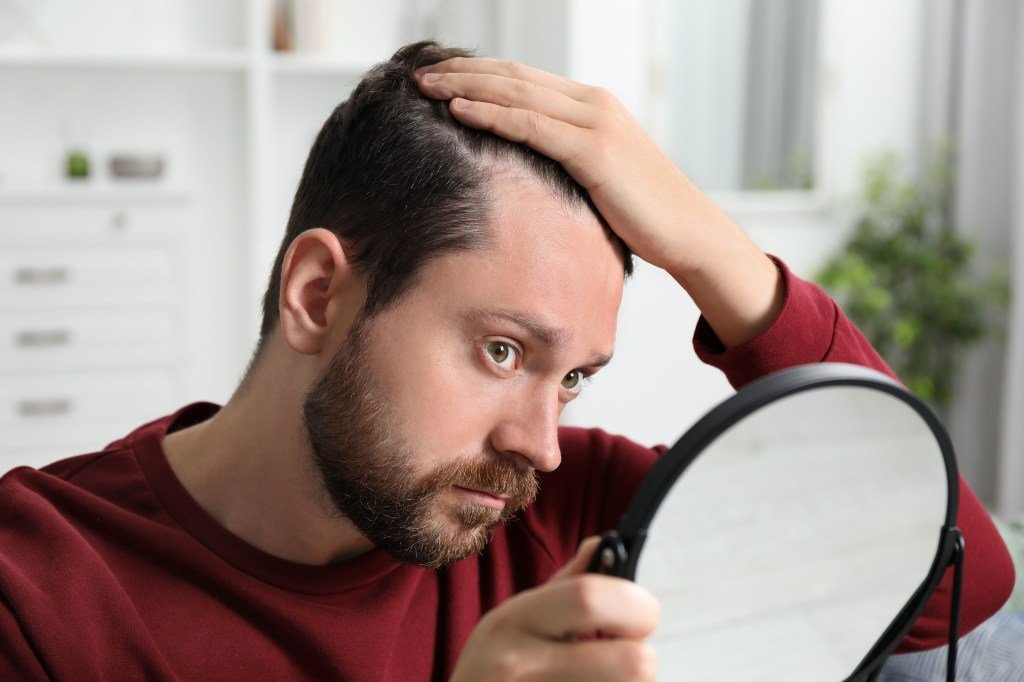Washington – The latest trend in the treatment of hair loss may seem known – in essence, it is a re -re -introduced drug first in the 1990s.
At that time, TV viewers were flooded with rogaine ads, a topical adhesive solution that could help treat the thinning hair when applied to the scalp.
Now dermatologists are increasingly prescribing the medicine, generally known as Minoxidil, in low -dose pills to help men and women wear or regrow hair.

Practice follows a small piece of recent studies suggesting that the ingredient also works – and maybe better – when swallowed, rather than applied to the hair glands on the head.
Telecommunications companies are also promoting a new demand by offering a quick, simple way to get a recipe and send the pills directly to customer doors.
Here’s a look at the medicine:
A retro approach to hair loss
Minoxidil initially developed as a pill to treat high blood pressure in the 1970s.
Researchers noticed that some patients who received it suffered hair growth growth as a side effect.
Rogaine was approved by the Food and Drug Administration in 1988, the first drug to acquire the approval of the Male Model Ballace Agency.
Studies showed that men in medication, which were applied directly to the head of the head, had a slower rate of hair loss and, in some cases, regression hair.

Starting in 1991, a lower dose was approved for women and the brand was aggressively traded as a recipe on TV and press.
The drug’s ability to slow down hair is likely to be related to its effect on blood circulation, according to experts.
“By increasing the blood flow to the head of the head, it signals hairs to stay in their growth phase for longer,” said Dr. Adam Friedman, chairman of Dermatology at George Washington University. “We are trying to keep those hairs at that stage of growth as long as possible.”
A recent consensus letter from more than 40 American and international dermatologists concluded that Minoxidil pills are effective and often more appropriate and affordable than liquid formulation.
Patients prefer the pill
There is little research that compares the two forms of Minoxidil, but many dermatologists believe the drug works better as a pill.
At a chemical level, Minoxidil is absorbed more directly when digested in the intestine than when applied to the hairline.
Also more appropriate, with patients taking the oral medicine once a day, instead of applying the juice once or twice a day using a dropper.
“As you can imagine, this can be quite heavy,” said Dr. Susan Taylor of the University of Pennsylvania. “Although people often enthusiastically start therapy” and even see results – after a while there are many abandoning. “
The doses set for oral use are also very low.
Dermatologists often direct men to take half of the pill at a lower dose; Women may only need a quarter of pills.
These low doses can also reduce the chances of side effects, which can include dizziness, rapid heartbeat and swollen feet.
The medicine is not recommended for people with a history of heart issues either who are pregnant or breastfeeding.
The only remedy approved by the FDA for hair loss is finasteride, sold under the name of the propecia brand, a drug that blocks a testosterone by -product that causes hair loss to men.
This medicine is generally considered more effective than minoxidil, but occasionally can cause worrying side effects, including erectile dysfunction. For optimal results, some dermatologists prescribe both medicines in combination.
Why are not Minoxidil FDA pills approved for hair loss?
In short, because there is very little money to be made.
The minoxidil patent has expired and is now available as a general low -cost medicine.
This means that drug creators have little financial incentive to spend millions on new studies they would have to gain FDA’s approval for hair loss.
“For a drug like Minoxidil Oral – which is as old as dirt at this point – there is no reason to do it,” Friedman said. Like other dermatologists, Friedman gives patients with hair loss a recipe for pills that intend to treat blood pressure, a practice known as descriptors outside the labels.
Trying for patients is that Minoxidil is extremely affordable, with some pharmacies that provide one month supply for less than $ 5.
“No single patient has complained about the cost of this medicine, which is extremely rare,” said Dr. Luiz Garza from Johns Hopkins University.
Telecommunication firms open access
The vast majority of doctors prescribing minoxidil for hair loss are dermatologists, who often turn to older medicines out of labels for various hair and skin conditions.
A study by American dermatologists published last year found that 80% reported describing Minoxidil Oral. But with only about 12,000 dermatologists in the US, some patients may have problems finding a provider.
Telehealth providers like Hims and RO say they are helping to fill the gap. The business model of the companies offers patients quick access to the medicines they seek, often as they simply complete a questionnaire about their medical history, medications and treatment goals. The information is reviewed by a health provider that can quickly approve a recipe, assuming there are no red flags.
Trying for patients is that Minoxidil is extremely affordable, with some pharmacies that provide one month supply for less than $ 5.
“No single patient has complained about the cost of this medicine, which is extremely rare,” said Dr. Luiz Garza from Johns Hopkins University.
#treatment #hair #loss #advantage #remedy #1990s
Image Source : nypost.com
